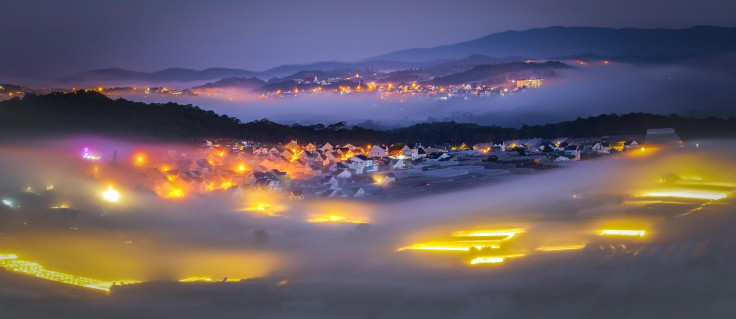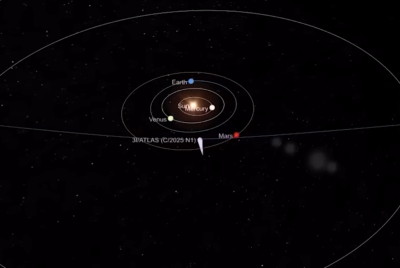Torenza Passport Woman Goes Viral On The Internet: Here Are Other Fictional Places That Have Baffled People All Over The World
A viral passport from 'Torenza' revives old myths — from Taured to Biringan and Hy-Brasil

On 6 October 2025, a bizarre video surfaced online showing a woman at New York's John F. Kennedy International Airport presenting a passport from Torenza, a nation absent from every map, record and database. Immigration officials were left stunned, and the internet erupted.
The clip, viewed millions of times across TikTok and Instagram, shows her calmly explaining Torenza's location in the Caucasus, fuelling theories of parallel universes or deepfake hoaxes amid rising AI-generated misinformation.
As the Torenza passport woman joins the ranks of viral urban legends, she revives a long tradition of phantom places that have confounded explorers, cartographers, and netizens alike, where fiction and reality blur.
The Man from Taured: Airport Portal to Another World?
In July 1954, a Caucasian man in a tailored suit arrived at Tokyo's Haneda Airport clutching a passport from Taured, a sovereign state he insisted lay between France and Spain—precisely where Andorra sits today. Fluent in multiple languages, he produced documents with valid stamps from real nations and spoke of routine business trips to Japan, baffling officials who found no trace of Taured in any records.
Detained overnight in a guarded hotel room, he vanished by morning, his belongings gone too, leaving only whispers of interdimensional slips. The tale, rooted in the 1959 arrest of fraudster John Zegrus—who forged passports from his invented 'Tuarid' to scam banks—evolved into a staple urban legend.
Zegrus, dubbed the 'Mystery Man' by Japanese press, inspired the story's core: a traveller from nowhere, evading capture with fabricated origins. Much like Torenza's viral clip, Taured endures as a supposed proof of glitches in the matrix, captivating those who crave the uncanny over cold facts.
Biringan City: The Philippines' Enchanted Metropolis of the Lost
Nestled deep within Samar's jungles, Biringan City emerges in Filipino folklore as a gleaming, futuristic haven ruled by 'engkantos'—mischievous supernatural beings who lure the unwary into eternal thrall. Legends from the 1990s recount hikers glimpsing skyscrapers and neon lights where only foliage stands, only to return changed, haunted by visions of a parallel realm.
One legend centres on a girl named Carolina, who travelled to Samar with two friends for a holiday and never returned to Manila. Her family received a letter from her stating she was happy living in Samar, addressed from Biringan City, leaving them puzzled; some believe she became its princess.
Filmmaker Chito Roño drew from these tales for his 2009 horror film T2. Biringan's elusive allure, much like Torenza's mystique, continues to draw seekers to Samar's forests.
Hy-Brasil and Frisland: Cartographers' Ghostly Isles
Hy-Brasil, a mythical island west of Ireland, appeared on maps from the 14th to 19th centuries, derived from Celtic lore as a mist-shrouded paradise visible only every seven years on 1 March. Named for the 'isle of the blessed', it featured in tales of St. Brendan and expeditions by explorers like John Dee, though searches yielded only ocean. The island, sometimes linked to a necromancer and black rabbits, vanished from charts after failed sightings in the 1800s.
Frisland, another North Atlantic ghost, dotted maps from the 1560s to 1660s as a Frisian-like land near Greenland, fabricated from the Zeno brothers' 1558 hoax narrative of Venetian voyages with fur-clad natives. Emerging from misread Frisian coastlines, it misled navigators until dismissed as an error in the 1700s.
Viral Fiction
Authorities at JFK International Airport were left baffled when a woman arriving from Tokyo presented a passport issued by a nation called Torenza, a country that, according to all known records, maps, and databases, simply does not exist #world pic.twitter.com/TdwI8gHwVj
— Holly (@HollyBe4) October 8, 2025
X user @HollyBe4 shared the Torenza video, noting, 'Authorities at JFK International Airport were left baffled when a woman arriving from Tokyo presented a passport issued by a nation called Torenza, a country that, according to all known records, maps, and databases, simply does not exist'.
These spectral lands—Taured, Biringan, Hy-Brasil, Frisland—and now Torenza, illustrate fiction's power to deceive even experts. In an era of AI-generated hoaxes, the line between myth and misinformation grows ever thinner.
© Copyright IBTimes 2025. All rights reserved.




















